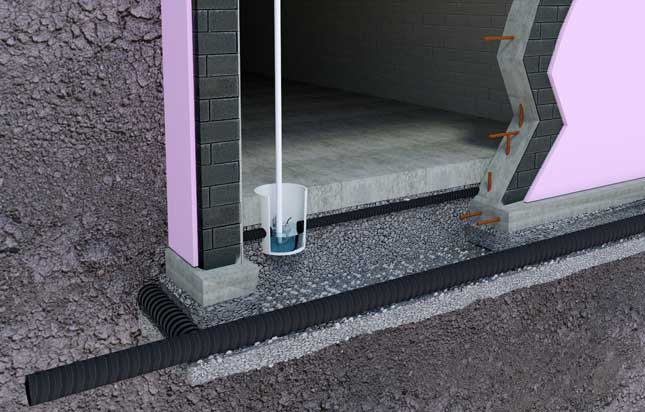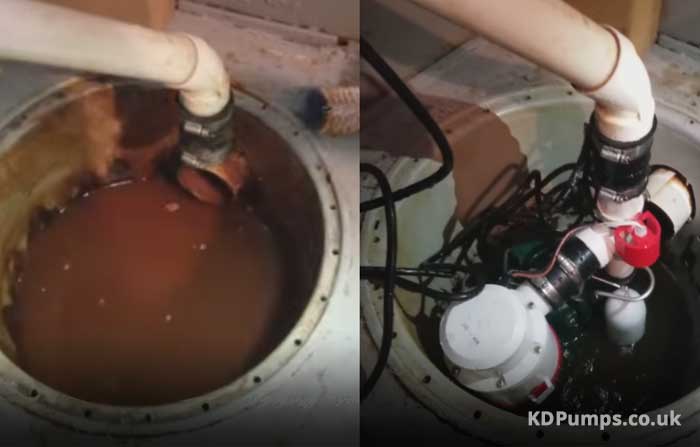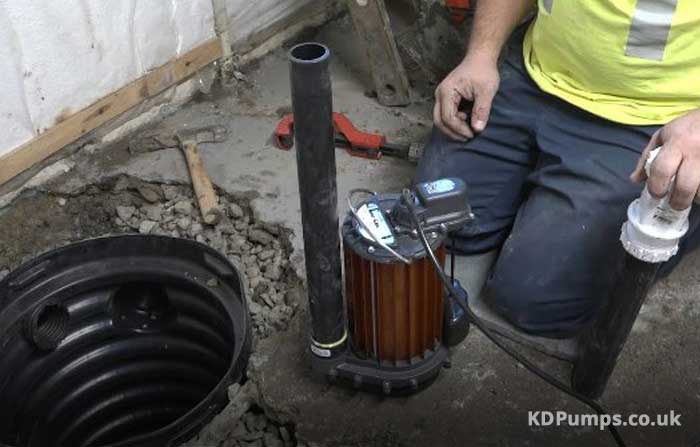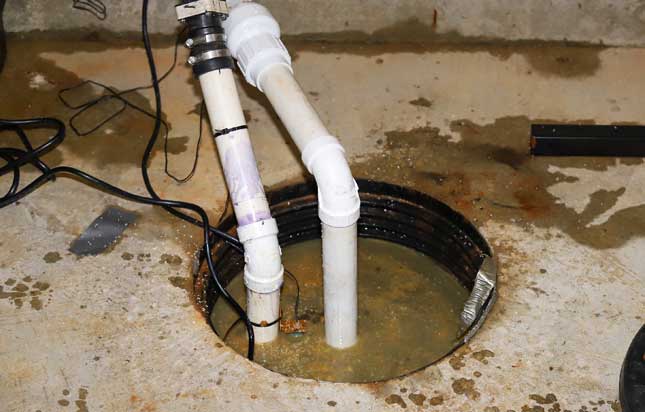What is a Sump Pit?
A sump pit plays an important role in ensuring that your basement remains dry.
Flooding is to be avoided at all costs as apart from being highly inconvenient, it can also end up being extremely costly.
Thanks to the sump pit, the excess water can be held until it is removed by a sump pump.
Article Chapters
What is a Sump Pit?

Image credit: Shutterstock
A sump pit, or a sump basin, is a hole which is constructed in order to collect water.
The lowest part of the basement, or what is often referred to as the crawl space, is the most suitable place to have the sump pit to prevent flooding problems.
The groundwater level could get quite high especially after heavy storms.
Should the water level exceed a certain level, it will start to flow into the pit.
The water is then filtered to be pumped to a designated drainage area.
The filtered water makes its way into the vertical standpipe situated at the centre of the sump pit.
This has a hole, so that extra water is removed.
As a result the water quality can be improved.
The sump pit should also include a sump pump.
This will be used to periodically remove excess water from the pit.
This is important to prevent overflowing.
Whenever the water level in the pit exceeds a certain level, the sump pump will start working automatically to pump away the excess water.
What is a Sump Pit Used For?

Sump pits are mostly used in properties that sit close to or below the water table.
Their goal is to remove additional water from a specific area, then relocate it to a safer area and prevent flood damage.
If it were not for a sump pit, flooding could easily occur, and this would lead to damages, mold growth, moisture related problems and similar damages.
Therefore, it is important to have a sump pit in the basement to prevent such problems occuring.
Sump Pit Design Schematic

As mentioned before, the sump pit acts as a hole to collect water.
Often drain tiling is used, whereby the tiles include holes, and are at an angle which will ensure that the water can be collected into one area as required.
Every sump pit will have a different water level capacity.
The role of the water level detector is to activate the sump pump once the maximum level is reached.
At that point, the sump pump will start to drain away the water from the sump pit to the desired area.
While a sump pit is commonly used in basements to collect excess water, it’s also used in other settings where different fluids, small debris and other materials are involved.
Common examples include sump pits in hospitals which collect hazardous waste, and sump pits in car repair garages which collect spilled fuels and lubricating oils.
Sump pits are also constructed to collect water during excavation works.
Planning Considerations
There are various factors to take into account, including:
- The water which is withdrawn from the standpipe will need to be drained to a suitable location. Some good examples include a sedimentation trap or tank, or a stabilised area.
- If the water that is pumped from the sump pit goes directly into the drainage system, it is recommended that a geotextile filter cloth is used around the standpipe. After wrapping this, some mesh hardware cables can be wrapped around the filter to secure it in place. This will help in increasing the water entry speed into the standpipe while also ensuring proper drainage.
Common Sump Pit Misconceptions

Image credit: Shutterstock
Some homeowners are reluctant or somewhat hesitant to have a sump pit because of certain misconceptions, which we shall be debunking here.
Sump Pits are Large
Many people think that sump pits take up too much space.
However this is actually not true.
The majority of sump pump systems are compact.
As they are located under the basement floor, they will not be cumbersome at all.
Moreover, many use submersible sump pumps which sit underneath the water in the sump pit.
Sump Pump Systems are Complex
This is not the case at all.
In reality, sump pump systems consist of two key components.
That is, the sump pit and the sump pump.
There is a discharge line which will be responsible for directing the water away from the property.
While the sump pit collects the excess water, the sump pump will be responsible for pumping it out once it exceeds a certain level.
It will then be moved on to a designated drainage area.
Hence, the concept of a sump pump system is not complicated at all.
Sump Pits are Unnecessary for Sump Pumps
The risk of flooding is quite high when a house has a basement, especially in periods when heavy storms or moderate rainfall occur.
One of the most ideal ways to prevent flooding is to have a sump pit.
It is a safe and reliable way to avoid flooding and moisture related problems.
And to improve the efficiency of a sump pump system, it is best to have a sump pit.
Sump Pits Regularly Fail
This is not the case, as sump pits rarely fail.
Indeed, sump pit failures are only likely should there be an electricity outage.
That said, this can be avoided by investing in a backup generator.
Another issue is that should the discharge lines be allowed to get clogged or frozen, naturally the system would fail.
But with proper maintenance such instances can be avoided.
Moreover, to prevent problems it’s best to have the installation process carried out by a pump professional to ensure that the pit is of the most suitable size and that there’s no defects.
Sump Pit Maintenance
As with anything critically important, regular and proper maintenance is paramount.
Over time, the pit could easily get blocked as a result of an accumulation of sediment and organic matter.
Hence, cleaning it on a regular basis is important.
Maintenance and cleaning ensures improved efficiency, and this will also help in extending the life of the system.
It’s highly recommended to inspect the sump pit after heavy storms.
You may notice that the pit and the filter fabric may have become clogged with some residue, and in such a case cleaning should be carried out as soon as possible.
Cleaning a Sump Pit
To clean a sump pit, it’s important to follow these steps:
- First turn off the sump pump and remove the power supply connection. This is crucial as if the pump is not unplugged it would be very dangerous.
- Then remove the pump from the drain pipe and place it out of the pit. Wrap a plastic sheet around the bottom of the pump and place it in a location which will allow you to access all the sides of the pump easily.
- Start by spraying water over the pump using a garden hose. Loose debris and other dirt will come off easily this way. You may also need to use a cleaning brush to remove any residue that’s stuck to it.
- After this process, rinse the pump using the hose again in order to remove the remaining dirt and debris.
- Next, remove the remaining water from the check valve, by collecting it in a bucket.
- Using a dry/wet vacuum cleaner, drain any remaining water from the sump pit.
- Finally, now that the pump and pit are clean, you can reconnect the sump pump to the power source. Turn it on to check that it works properly.
Conclusion
Sump pits are very important to ensure that excess water does not cause problems or damages.
It is important to ensure that they’re properly maintained in order to improve their effectiveness.


Comments are closed.